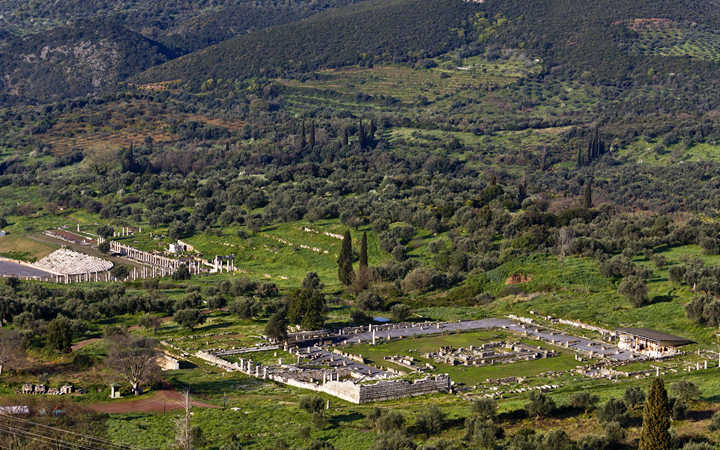Messene is a significant ancient city in terms of its size, form, and state of preservation, and still has much to offer. It possesses not only sanctuaries and public buildings, but also imposing fortifications, and houses and tombs. It enjoys, amongst other things, the advantage of never having been destroyed or covered by later settlements, and is located on an unspoiled inland site. Its natural setting combines the grandeur of the mountains of Delphi with the low-lying, riverine tranquility of Olympia, the dominating bare limestone mass of Ithomi, the site of the ancient acropolis, with the low fertile valley around the ancient city.
To reach Messene from Athens you have to drive through the highway Corinth – Tripolis – Megalopolis – Kalamata or Corinth – Patras – Pyrgos – Kyparissia – Meligalas. From Olympia the journey to Messene lasts only 1 and 1/2 hr by car (around 75km.) Ancient Messene was protected at its Northeast from mountain Ithomi, like a natural wall. The rest of the city was surrounded by strong walls about 9,5 km length, which can be admired up to date. Descending from Mavromati village, we reach the Museum. Passing through the vineyards and the olive fields, we see on the right the theatre of ancient Messene with its spectacular walls, and on the left, the Arsinoi Fountain. Moving on to a narrow path, we see on our left the Market, and after that, the sacred area of Asklipieion.
The Theatre
The first monument one encounters on the way from the Museum to the archaeological site is the theatre. The theatre was used for large scale assemblies of political character. In this theatre was held the meeting between King Philipp V Macedon and Aratos the Sikyonian in 214B.C, the day following the revolt of the Messenian people.












